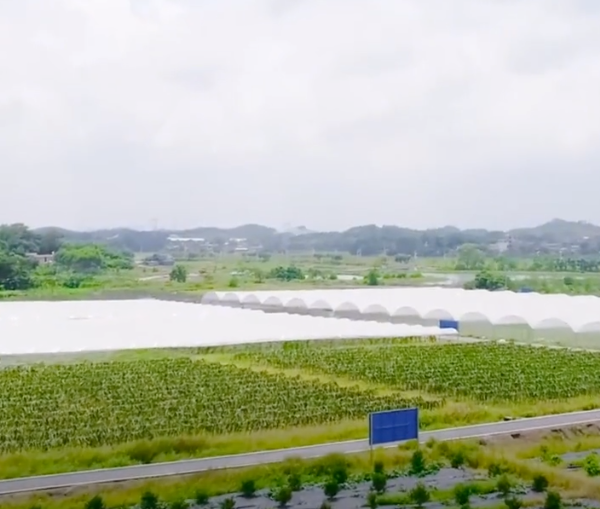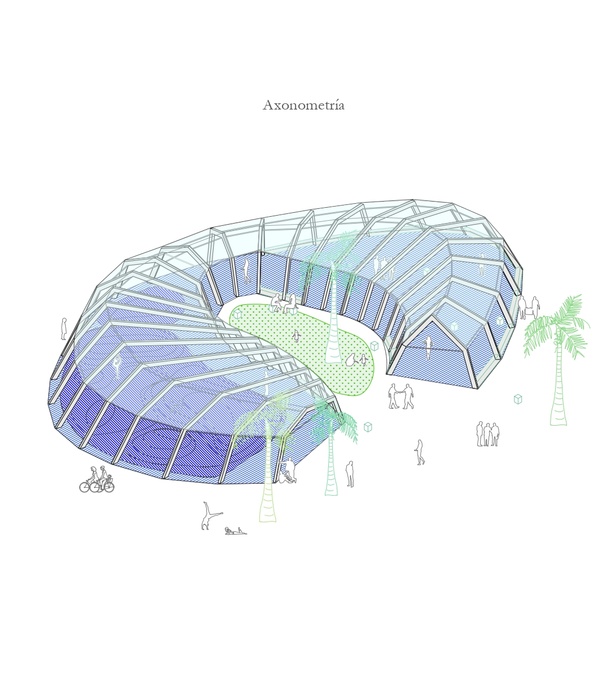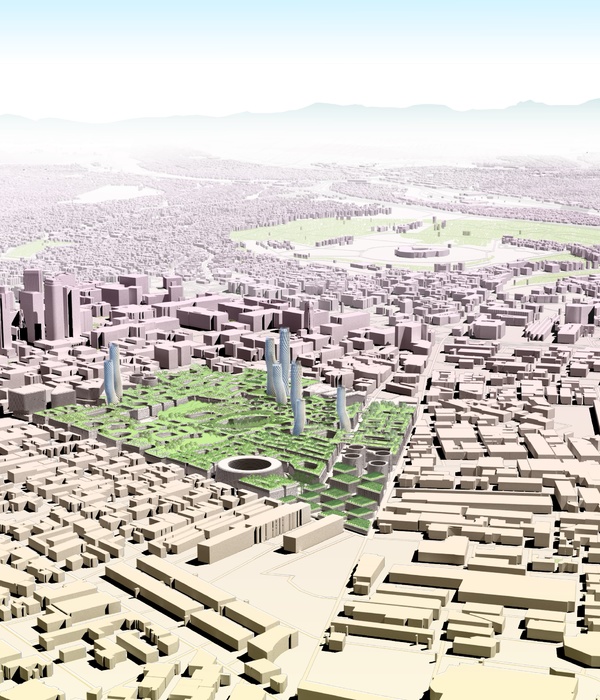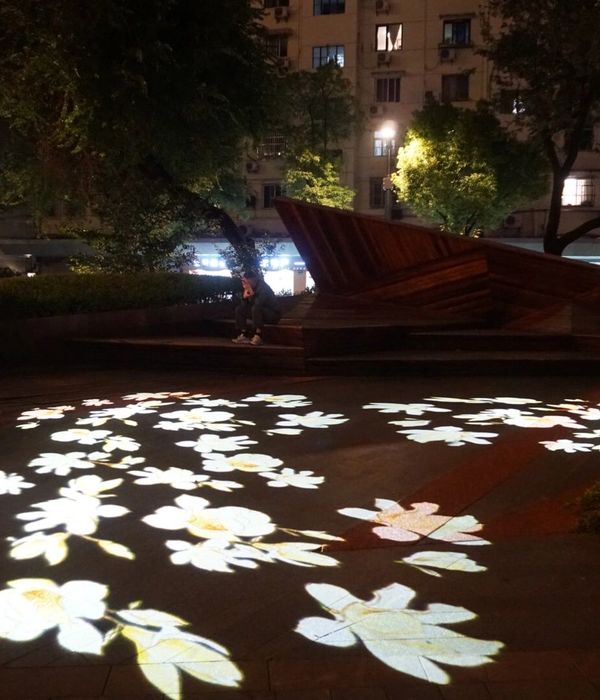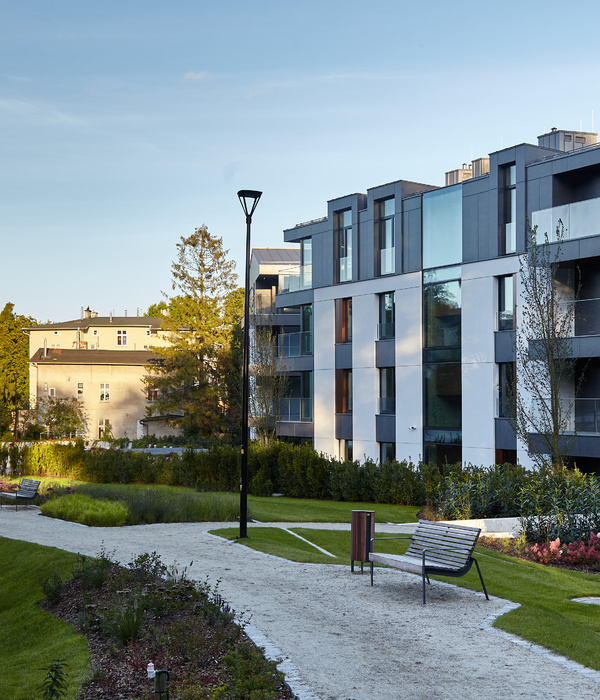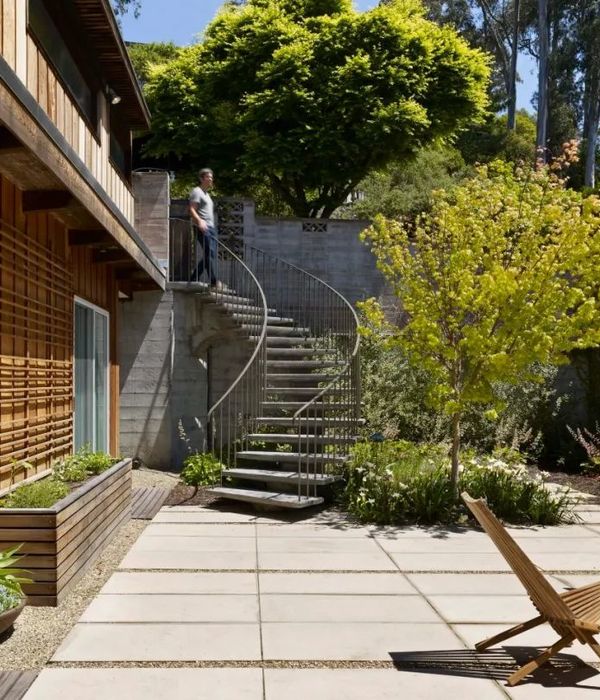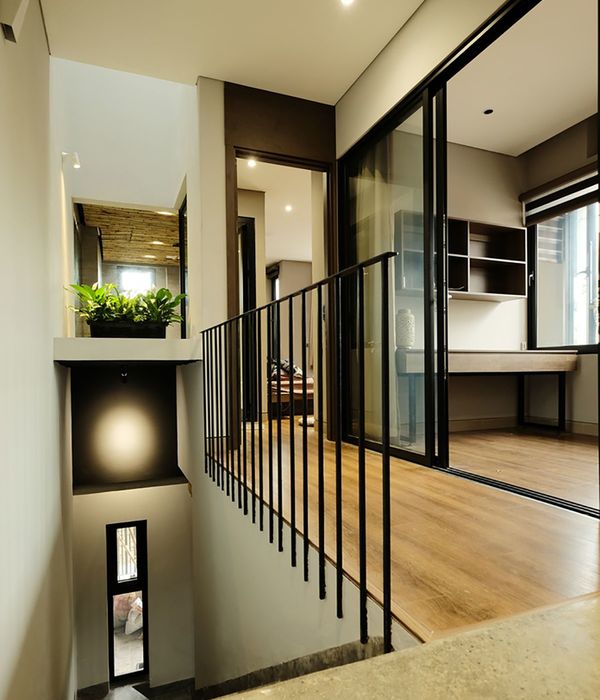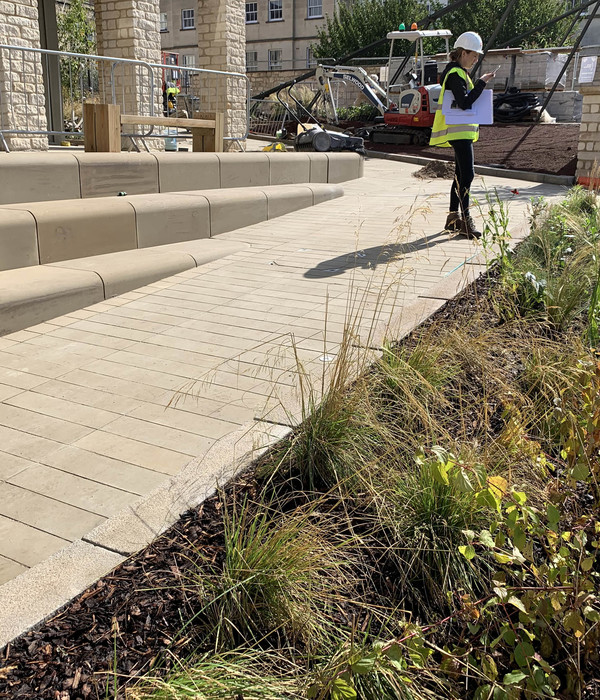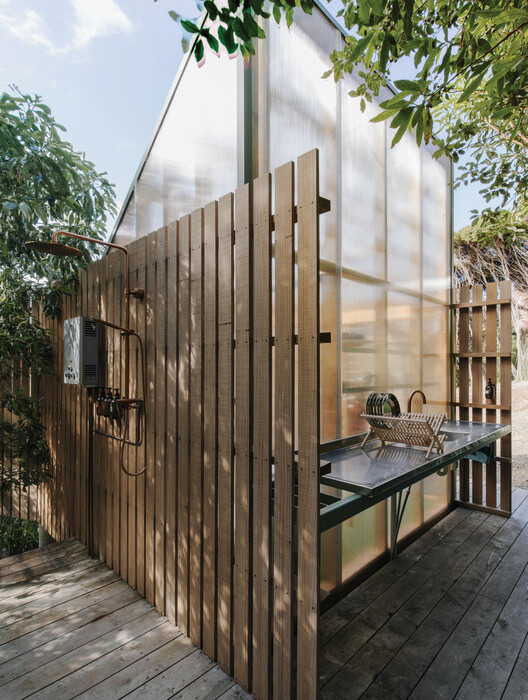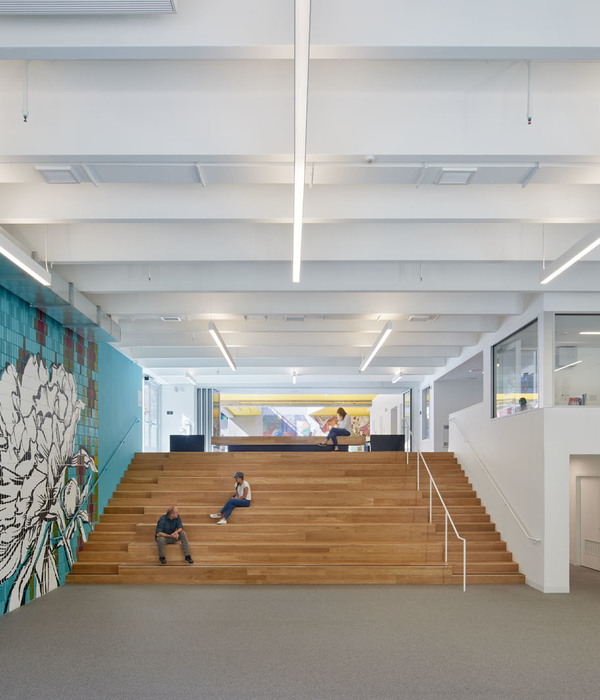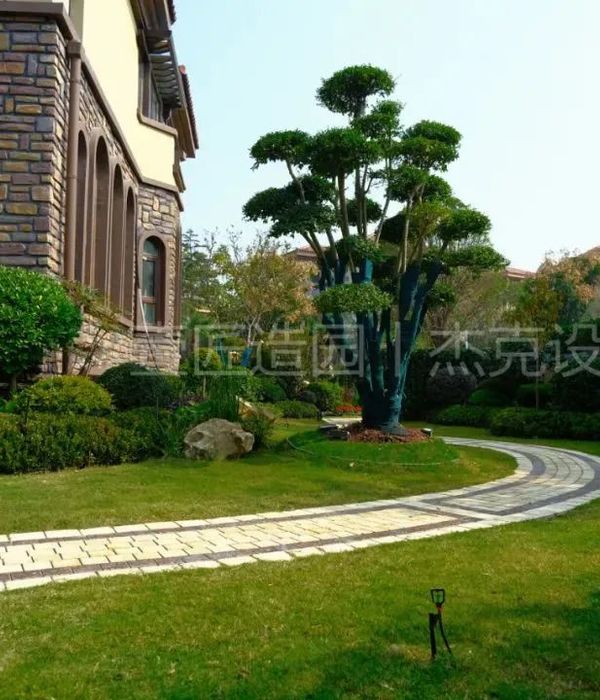回想少年时光,多少人记忆当中最难忘的经历、最精彩的一瞬、最知心的对话,都发生在校园里的某个角落。去年,Crossboundaries在为北大附中本校、及其朝阳未来学校分校改造校园景观的过程中,重温了校园的青春飞扬,也重新思考了它对教育的意义。
Last year, Crossboundaries injected brand new landscapes into two existing campuses, the Affiliated High School of Peking University and its branch school, Chaoyang Future School, and during the process, rethought about the meaning of campus design for education.
▼改造过的校园核心区,the central are of the campus after renovation
众所周知,如今,在很多创新教学空间,自由布局的教室和走廊正成为“标配”,其背后的理念是将对空间的支配权更多地还给学习者,激发他们的主动性。那么校园呢?作为全校师生通行、活动、驻留的综合场所,校园丰富的层次更加接近真实社会,也就比很多功能空间蕴含更多跨界、多元的教育和交流机会。所以,校园同样——甚至是更需要一个宽松、友善的语境,让孩子们在一生当中最富生机、充满可能的年华,有机会在这座“舞台”上反复彩排自己的人生未来。
于是在此次两校改造过程中,我们确定的设计原则是,围绕学生的真实需求和体验,将传统高度分割而封闭的“刻板空间”,化解成更加开放而连续的“自由空间”。
The free layout for indoor learning spaces has become the ubiquitous in innovative education. The idea, to stimulate learners’ initiative by returning more ownership of space to its users. A campus, with a variety of activities taking place within and between different groups, is with its complexity similar to the real world beyond the boundary fence and thus contains even more diverse opportunities for learning beyond the formal learning spaces. Continuing the same idea of design to promote self-learning campus landscapes should be equally relaxed, friendly and inviting.
When intervening with a campus landscape, we put focus on the needs and experiences of students, to resolve the utilitarian “rigid space” into a more open and continuous “free space”.
▼改造示意图,renovation diagram
校园故事一:北大附中本校
STORY ONE: The Affiliated High School of PKU
路径自由、空间打开
Free Passage, Free Space
在国内略有些年头的校园或单位大院里,总能见到主配楼、运动场、绿化区等功能区规矩排布,其间以车行干道串连的空间格局。始建于上世纪60年代初的北大附中本校也不例外。半个多世纪以来,其校园面貌虽几经更迭,仍保留了很多历史的痕迹。时值今日,北大附中提出“以学生为中心”的全新教育理念,鼓励学生释放天性、自主决策。校方继2016年委托Crossboundaries对其教学空间、体育馆和艺术中心进行改造后,又计划调整这座老校园核心区的景观。
In traditional campuses in China, you can always see a similar layout of buildings and sports fields connected by roads for vehicular traffic and filled in with lawns. The Affiliated High School of Peking University, dating back to early 1960s, was no exception. Over more than half a century, the campus experienced several shifts but still kept many of its original characteristics. Today, based on the school’s new concept of student-centered education, Crossboundaries adjusted this by gone campus’ landscape, liberating its spacial constraints, complimenting the 2016 transformation of indoor learning space, sports and art center.
▼校园核心区连缀成更完整的自由区域,the central areas are connected to form an
integrated open space
还路于人
Returning roads to pedestrians
我们发现,传统校园里的交通动线基本是以车行干道为主导、人行动线依附于两侧的。这样,虽然人员在校园内通行与活动的频率与范围都远大于车辆,其优先级却被排在了车之后。
当“车行”逻辑凌驾了“人行”逻辑,一方面,灵活的双脚总要跟在车轮后面“绕远路”,降低了行人通行的效率和可达性;随时可能发生的人车混行又会降低舒适度和安全感。另一方面——更重要的是,师生们在校园里除了基本通行,还需要进行各种休闲和交流;而在被车道切割的校园里,这些空间又在哪?显然,这座校园需要一轮人、车优先级的调换。于是我们同校方协商,把校园核心区的一条主要机动车道彻底取消,把更多路权和活动、停留的自由还给师生。
We found in these traditional campuses, pedestrain flow is usually pushed to the sides of the road, people prioritized after vehicles, despite the frequency and volume of people’s traffic surpassing any vehicular activity.
The perceived presence of cars reduces the sense to move around the campus comfortably and maintains an underlying sense of unsafety. People don’t only walk to pass from one point to another, they also have the appetite to spend time in the outdoor spaces to rest or shake off excess energy. So where is the space for these activities?To shift in priority of spaces for pedestrain and cars, a main road in the central area was cancelled, leaving more space for students and teachers.
▼校园中心的机动车道取消后,a main road in the central area was cancelled to shift in priority of spaces for pedestrain and cars
▼自由的校园,怎么走都行,a campus that is free to walk through
消灭“孤岛”
Deminishing the “isolated islands”
路的问题解决后,为将整个校园连缀成更完整的自由区域,我们又逐个优化了若干空间封闭或功能单一的“孤岛”。校园中央,原有一处四周高耸着铁丝网的封闭篮球训练场。校方在向全校师生征求校园改造意见时,呼声最高的一条就是“保留老球场”,因为那里承载了许多校友和在校生最美好的校园记忆:课间十分钟也要冲下楼打会球,烈日下或大雪天都不在乎,切磋出的友谊,帅气的中场三分、集体荣誉的巅峰、怦然心动的时刻……
Removing the road, we also reinvented several previously enclosed, single-functioned spaces on the campus, giving way to more consistant free space to meander, rest or play. Flipping a “caged” basketball court into an open sunken activity ground, its boundary fence was entirely removed and seating added to form a new edge. Now entirely open, the area is transformed giving both simplified visual and physical connections, offering alternative space in the campus for communication, exchange and interaction.
▼返校校友途经昔日老球场,今天的下沉式活动场,the sunken activity ground renovated from the old basketball court
当学校的新体育馆建成后,我们综合考虑了空间利用效率,将其改造为一处四通八达的“下沉式活动场”——拆掉“铁笼”,把两片练习场合并为一个标准篮球比赛场,并于四周添加了看台和一些自由形状的坐凳。于是,这片场地被充分打开,自然而然地融入了行人通行的路径,并强化了校园实体空间和视觉上的联系。现在,全校师生不仅仍有机会为热烈的户外篮球赛呐喊、助威,还能更加轻松惬意地在这里通行或休息。
▼原先被铁笼包围的球场,the old court enclosed by a “cage”
In the center of the campus there is a large lawn, a formerly underused place for no one would enjoy such a large empty space, especially in a context were it is not customary to sit on the grass. Converting this uninviting lawn into a functional and useful space for students and teachers, we added a variety of benches on and near the lawn, creating an “outdoor classroom” or “living room” for all kinds of gatherings.
▼篮球场功能被保留,the new basketball court
▼打开球场“铁笼”,观赛席也是休息处,the audience space can also be used as a place for resting and gathering
校园核心区的大草坪虽然允许进入,但大家不习惯直接坐在草上,也没人愿意在这空荡荡的地方久留,就成为一处面积很大、利用率却较低的场所。我们希望让所有“看的绿化”都转化为“人的空间”,就在草坪内部及道旁树周边添加了各种户外坐具,使之摇身一变成为“露天教室/客厅”,让惬意的交流随时随地发生。
▼大草坪与坐凳结合,不再拒人千里,benches are integrated into the large lawn to provide a friendly space for everyone
▼自由布局的坐具,benches are arranged in a free plan
▼与绿化融为一体的“露天客厅”,an outdoor “living room” embedded in the green area
我们还在一条原先光线昏暗、功能模糊、利用低效的楼间消防通道,地面铺设了跑道,墙体间嵌入功能件,升级为一处集跑道、休息区、宣传栏于一体的复合功能空间。其中的百米跑道成为学校利用率最高的体育训练场地之一。
▼跑道设计示意,running track design diagram
Hidden just around the corner is another outdoor space that served only to allow firetrucks to pass in the event of an emergency, severing two active parts of the same building. Ultimately its greatest asset now is adding purpose and appeal to a former dead space, serving as a complex set of functions, featuring a 100 meter running track, display walls and some seating.
▼无用消防通道变成高效运动空间,a former dead space is now serving as a complex set of functions
▼嵌入功能插件,the inserted functional elements
▼增加的宣传栏,the display walls
校园故事二:朝阳未来学校
STORY TWO: Chaoyang Future School
整体设计,让教育弥散在校园
Education Diffused In A Campus
朝阳未来学校是一座整体改造的新校园,这在设计上给了我们更多主动权。该校教育者相信,“教育无处不在”。所以校园应该是室内教学空间的延续,价值一致,不可割裂。于是我们基于“从建筑到标识”的整体设计方法,从一开始就将景观也纳入考量。
Chaoyang Future School is an entire campus renovation project with considerably less limitations. The educators of this school believe that education is everywhere, resulting in a need for the campus to be a continuation of the indoor and outdoor learning space under the same educational idea. From the outset this project was considered across the scales of architecture to signage and from inside to outside.
▼校园概览,campus view
不止跑道
Beyond a running track
在朝阳未来学校的校园内,我们布置了一条承载着教育意味的慢跑道,成为景观语言与教育理念一致性的集中体现。这条跑道不仅提供必要的运动功能,也是一条高效利用占地的校内步行主路。它以自由形状连缀起校园各空间,与沿途的建筑、场地分别形成尺度适宜的关系。“环形”路径均等的可达性,宣示了校内所有空间的平等地位。“桃李不言,下自成蹊”。跑道在潜移默化间,成为一名鼓励学生自在、自主决策路线与行动的“教育者”。
▼平面图,plan
At Chaoyang Future School, we established a running track with a rich educational significance concentrated in its function and meaning. This running track doesn’t only provide the basic function for sport, but also plays as an pedestrain route in this small campus. With a free shape, it links up every corner in the campus. The open accessibility of this circular path encourages students to make decisions on their routes and actions and presents a message of integration and equal weighing of choice of how to move and where to move to.
▼慢跑道以自由形状连缀起校园各空间,a circular path links up every corner in the campus
▼校园建筑细部,building exterior view
▼跑道与沿途的建筑、场地分别形成尺度适宜的关系,the circular path shows an
appropriate
scale relationship with the surrounding buildings and sites
▼形式自由的跑道,a passage with an open accessibility
积极边缘
The positive fence
校园围墙这类所谓“次要”元素往往不受重视,缺乏设计投入,成为极少与人产生互动的消极空间。但我们尝试为它赋予一些积极功能。在朝阳未来学校的校园边缘,我们没有建起围墙,取而代之的是一段内置了屋顶和座椅、并最大程度增加了通透性的“游廊围栏”。不仅为校园内部人群提供了非正式社交空间,也强化着校区与社区的联系,鼓励学生接触真实世界。
▼设计示意图,diagram
A campus fence is usually limited to delineating property limits, often downplayed and lacking in design, rarely interacting with people. The Crossboundaries approach was to enhance it with positive functions. At the edge of the Chaoyang Future School campus, where it intersects with the local neighborhood, we didn’t build up a barrier but rather created a space between, intergrating shelters and seatings into a “living fence”. An informal social space with transparency is reducing the hard boundaries between this learning community and their host environment. As a result, this boundary not only provides places for in-campus communication, but also strengthens the link to the community surrounding it, encouraging students to connect to the real world.
▼游廊远景,exterior view of the “living fence”
▼非正式的社交空间,an informal social space
反思:校园需要景观设计吗?
Rethinking campus landscaping
提起“景观”,很多人觉得就是小事一桩。确实,对于包括学校在内的很多公共建筑项目,景观通常都属于较次要的环节,往往在项目主体完成后,根据经费、工期等现实条件“填个空”。尤其学校,很多时候更是侈谈“景观”的,只能在满足了教学必需的核心功能后,依照绿化率要求布置些植被,再点缀几处校园小品。
Many view landscapes as a minor topic. Indeed, in many publicly funded architectural projects, landscapes are usually considered as a secondary element, fulfilled to meet the basic necessities . For schools especially, it usually means grassing over areas to meet the required campus standards, with maybe several funky highlights, rather than sophisticated-designed landscapes.
▼游廊连接社区与校园,the “living fence” linking campus to the community
但校园景观真的等于可有可无的装饰吗?
Why is landscaping in school campuses often only a dispensable decoration?
今天,个人与物理空间及人文环境间的关系、学生如何获得自我认知和充盈的内心,都日益成为现代教育探索的范畴,也是Crossboundaries设计的起点。这两座校园经过改造,将之前一直被需要、却受传统布局约束的自由空间,一步步释放了出来,以各种形式和尺度,相互融为一体。同时,校园空间的总体利用效率也得以提升。它们令我们愈发体会到,教育的迷人之处,就在于美好的效果往往取决于细节上的匠心。
The relationship and interaction between individual learners and the environment has become an important consideration of modern education, as well as a starting point of Crossboundaries’ design. In the two projects above, freedom of space, previously constrained by former rigid approaches, now integrated into various forms, scales and functions with the whole school campus. Meanwhile, the overall efficiency of campus space has been improved. Crossboundaries believe that the fascinating element about education is that excellent results often lie in the detail of less significant things.
▼朝阳未来学校夜景,night view of the campus of Chaoyang Future School
北大附中本校校园景观改造
地点:中国,北京
客户:北京大学附属中学
总场地面积:51560平方米
设计周期:2018 年3月至2018年5月
施工周期:2018年7月至2018年9月
完成时间:2018年9月
设计方:Crossboundaries, 北京
合伙人:Binke Lenhardt(蓝冰可), 董灏
设计团队:于兆雄,侯京慧,胡冰煜,高旸,郝洪漪,Irene Sola, 汤佳音,王旭东
合作方:北京建筑设计研究院-元景景观建筑规划工作室、北京建筑设计研究院-第五建筑设计院
摄影:杨超英,郝洪漪
朝阳未来学校校园景观改造
地点:中国,北京
客户:北京大学附属中学
总场地面积:25916平方米
设计周期:2015年10月至2018年3月
施工周期:2017年9月至2018年5月
完成时间:2018年5月
设计方:Crossboundaries, 北京
合伙人:Binke Lenhardt(蓝冰可), 董灏
设计团队:高旸,Andra Ciocoiu,Natalie Bennett,郝洪漪,王旭东
合作方:北京建筑设计研究院-元景景观建筑规划工作室、北京建筑设计研究院-第五建筑设计院
摄影:杨超英,郝洪漪,董灏
{{item.text_origin}}

